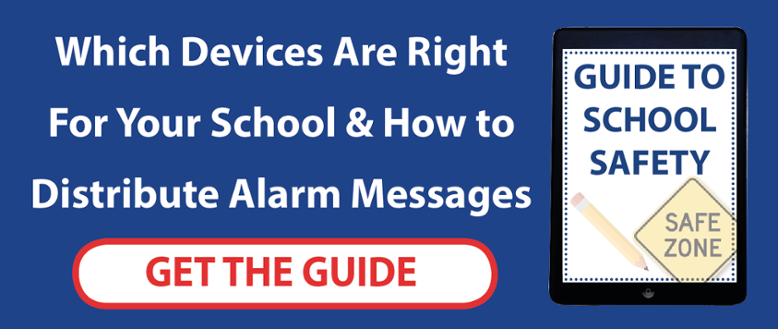
Although classroom safety should be one of the most paramount issues addressed by school business managers, the fact is that is sadly often a neglected one. Whether this is due to budget constraints or a lack of understanding regarding what classroom safety entails, it is a critical issue that cannot be compromised on and must be fully ensured. Here are five essential ways to ensure student safety.
1. Prevent Accidents From Happening
One of the best ways to avoid accidents is to anticipate them before they happen and put preventative safety measures in place. Teachers and safety authorities should make sure there are no loose wires, electric hazards or physical trip hazards present in their classrooms. It is imperative to bring in professional help at least annually to physically examine classrooms and wiring for potential safety hazards.
Building structures can also pose a threat, particularly historic buildings, and should be checked for constructional integrity at least every few years.
In the event that an accident does occur, teachers should be able to call for help as quickly and easily as possible. Staff should have basic first aid training that can be employed before professional help can arrive at the scene. Additionally, they should have some safety devices with them from which they can raise the alarm and alert the right people of the problem, so that it can be dealt with as quickly as possible.
2. Make Sure Students Do Not Pose a Safety Hazard
Safety is not always a question of avoiding physical danger from external sources - sometimes the biggest hazard to students can actually be fellow classmates. Small arguments can easily escalate into larger altercations, putting both students and teachers at risk. Students should be given clear instructions on expected conduct and the consequences of failing to act upon said conduct. In case an issue should arise, help should be immediately accessible. Potential solutions to implement this could be installing CCTV cameras inside classrooms, though it is important to note that you still have to have some way of raising an alarm should something happen.
3. Addressing The Threat of Intruders
Intruders can target schools in two ways - after school hours with the intention of theft or other malicious conduct, or during school hours with the intention of harming children.
To prevent the first type of intrusion from happening, schools should make sure their after-hours security is up-to-date. Alarm systems should be fully installed and updated to ensure this. Secondly, all property should be clearly marked and logged so that any change to inventory can be immediately tracked and traced.
The bigger threat, however, is the presence of an intruder during school hours. To prevent any potential damage of this nature from happening, it is imperative that staff is trained in dealing with both armed and unarmed intruders. This can be aided by the use of personal safety devices that the staff can carry with them at all times and when triggered can raise an alarm quickly and efficiently. Students should also be given briefings on how to alert authorities discreetly and without notice in such a situation.
4. Safety in Schools Does Not Always Concern Physical Danger
While it is important to address physical threats to student safety, intellectual safety must also be given due notice. Psychological threats from teachers, intimidation from other parents or bullying from fellow students all contribute to an unsafe classroom environment. In order to help students feel secure and free from external threats it is important to instil a feeling of trust regarding any and all forms of danger. Clear communication regarding a no-tolerance policy towards intellectual abuse should be conveyed to all teachers, students and parents in order to implement this. Staff should also be given training on how to control potential issues before they escalate into larger altercations. Anger management courses can also be offered to students or staff who find themselves struggling to keep control of their emotions.
5. Make School Safety An Essential Part of Student Education
As mentioned earlier, a compromise on school safety is not always due to a lack of education regarding it or simple carelessness. Sometimes, it is the result of stretched school budgets that must pick and choose their area of focus. Classroom safety is not, however, an issue to be compromised. It is no more ignorable than teachers' pay or cafeteria lunches are. While schools should ideally assign a dedicated authority or department to monitoring and implementing classroom safety, at the very least stringent safety measures should be put into place. Regular training sessions should be arranged to ensure that teachers are fully educated on how to prevent accidents, protect students from intruders, alert authorities to any danger and manage a crisis situation. Budgets should also be laid aside for maintaining a well stocked first aid kit and safety apps or solutions that could make a big difference should a bad situation happen.
School safety is not an issue to take lightly. Not only is a safe school environment essential for the progress and development of children, failing to establish one can have unimaginable consequences. From smaller dangers such as a slippery floor to larger ones such as an armed intruder in the hallway, health and safety must be given its due share of attention and fiscal allotment if we expect our schools to be safe for our children.





